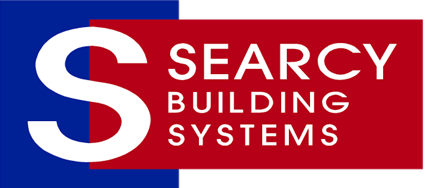Which Should You Choose?
Pole Barns vs Pre-Engineered Steel Buildings
Pole Barns
Life Span
Pole barns are constructed from embedded wooden poles or posts. While typically used for smaller agricultural storage (equipment, hay, and livestock), they are also used for residential or commercial purposes.



Pros & Cons of Pole Barns
Pros:
Cost Effective: Pole Barns less than 40’ wide are typically less expensive because they utilize lumber, lighter gauge sheeting, and typically require less concrete .
Versatile: Pole Barns can be used for many storage options, including agriculture needs.
Customizable: Pole Barns can be customized, modified, and expanded to meet specifications.
Energy Efficient: Insulation allows Pole Barns to reduce heating and cooling costs.
Cons:
Limited Design Options: Pole Barns offer basic and plain design options. They may not be able to provide options for those looking for a specific design aesthetic.
Maintenance Issues: Pole Barns often require more frequent maintenance due to the quality of construction materials and can potentially rot because posts are embeddded directly into the ground.
Vulnerable to Weather: Wood framing and lighter, 29 gauge sheeting is more susceptible to high winds, heavy snow, hail, and flying debris damage.
Lack of Insulation: Proper insulation is harder to achieve in pole barns. Without proper insulation, they are difficult to heat and cool, and less comfortable.
Susceptible to Pests: Wooden structures are more susceptible to pest infestations from termites, carpenter bees, and other rodents. This can cause structural damage and be costly and arduous to remediate.
Pre-Engineered Steel Buildings
Pre-engineered steel buildings or Rigid Frame, I-beam buildings are factory-manufactured off-site and transported to the final location for construction and assembly. The pre-engineered steel building components are pre-cut and pre-drilled for easy assembly, allowing for faster, less expensive construction. They can be used for a diverse range of purposes including warehouses, manufacturing, storage facilities, retail spaces, office buildings, and residential homes.
Life Span




Pros & Cons of Steel Buildings
Pros:
Durability: Steel building frames are known for their strength and durability. They are a great choice for areas with harsh weather or earthquake-prone locations.
Low Maintenance: Steel buildings are inherently resistant to rot, decay, and insect damage – requiring minimal maintenance.
Energy-Efficient: Steel buildings are easy to insulate, reducing heating and cooling costs in all four seasons.
Customizable: With an assortment of design options (including colors, roof types, and other added amenities), steel buildings are easy to customize to fit your needs and preferences.
Fire-Resistant: Steel buildings are inherently resistant to fire and fire damage.
Cost Effective: Pre-engineered steel buildings greater than 50’ wide are typically less expensive than pole barns due to the high cost of the necessary manufactured wooden beam required for wood to span these widths.
Cons:
Higher Upfront Cost: Because they utilize higher quality materials and require a sturdy concrete foundation, steel buildings can be more expensive to construct than traditional buildings.
Difficult to Modify: Because they are engineered by a certified engineer , steel buildings can be more difficult to modify post-construction.
Permits and Zoning Restrictions: Certain locations require permits and have zoning restrictions for steel building construction. This can require additional materials like masonry to be added which can add to the construction cost..
